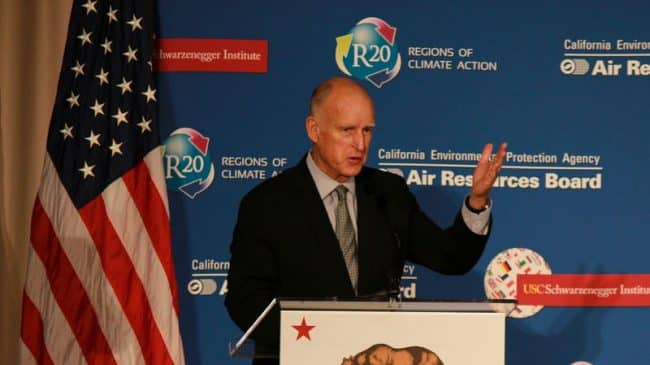In a relatively rare moment of bipartisanship, the California Assembly recently voted 77-2 and the Senate voted 37-0 to put a $7.5 billion water bond bill on the November ballot. Unfortunately, the bipartisan measure is a triumph of short-term thinking, pork barrel politics and buck passing at the expense of future generations.
There’s no doubt the state needs to improve its water-related infrastructure. The U.S. Drought Monitor map shows 82 percent of California suffering an “extreme” drought.
Earlier this year the U.S. Department of Agriculture designated 27 counties across the state as “primary natural disaster areas.”
The lack of rain and snowpack is the immediate problem, but California’s water supply is highly variable and it takes smart, long-term investments in infrastructure to capture, preserve and distribute water statewide while still protecting natural resources and the environment.
Unfortunately, the water bond wouldn’t do that.
Instead it is all-too-typical of how Sacramento works. The 32-page bill was printed just hours before the vote. When a spending bill passes nearly unanimously, it’s a good bet that some of the money goes to nearly every member’s district. And sure enough, the $7.12 billion in new debt in this bond would be spent in dribs and drabs all over the state, with virtually every district getting a little piece of the pie. Worse, the law creating the bond exempts all of the funded projects from state accountability and transparency requirements. What could go wrong?
The bond includes nearly $2 billion for environmental projects and billions for ongoing programs, studies and administrative costs.
Most of the money goes to local water agencies in every part of the state, and they can spend much of it however they please. The best hope is that $2.7 billion might go to help pay for two new reservoirs, but those projects are far from done deals.
Even in the best-case scenarios, less than half of the bill’s $7.5 billion would go to actually building infrastructure.
A basic principle of good government is you don’t use long-term debt to pay for short-term projects. If you are going to borrow billions and make payments on a bond for 30 years – which means taxpayers could end up paying over $15 billion in principal and interest – you should build something that lasts at least that long, like reservoirs, dams and bridges.
Yet, California has a long history of using long-term debt to finance short-term programs, resulting in the infamous wall of debt.
“The state’s key liabilities total around $340 billion, a substantial sum,” the nonpartisan California Legislative Analyst’s Office wrote earlier this year. “If divided among the state’s residents, the amount of these key liabilities would represent over $8,500 per person.”
The “spend now, pay later” party can’t go on forever. The next generation will be faced with inadequate infrastructure and too much debt to do anything about it.
The state’s water infrastructure is outdated and ill-equipped for the run of dry years California is experiencing. For example, major yield reservoirs haven’t been built since the 1970s.
Instead of borrowing billions to fund pet projects like nature conservancies and water conservation planning, as the bond measure would do, California needs to improve and update the water transmission system that is past its prime and does not connect areas with abundant water supplies with high-demand areas.
It needs to expand dams and reservoirs to increase water storage capacity so the state can save more water during rainy years.
And it needs to develop new tools, such as better pricing and water markets, to allocate scarce water resources and ensure that water users – everyone from farmers to businesses to homeowners – are paying market value for what they use.
But the bond measure won’t spur those changes.
Sadly, the new water bond measure would only bring more of the short-term pork projects and debt that helped get the state into this mess.
Dr. Adrian Moore is vice president and Lance Christensen is a policy analyst at Reason Foundation. This article originally appeared in The Press Enterprise.

